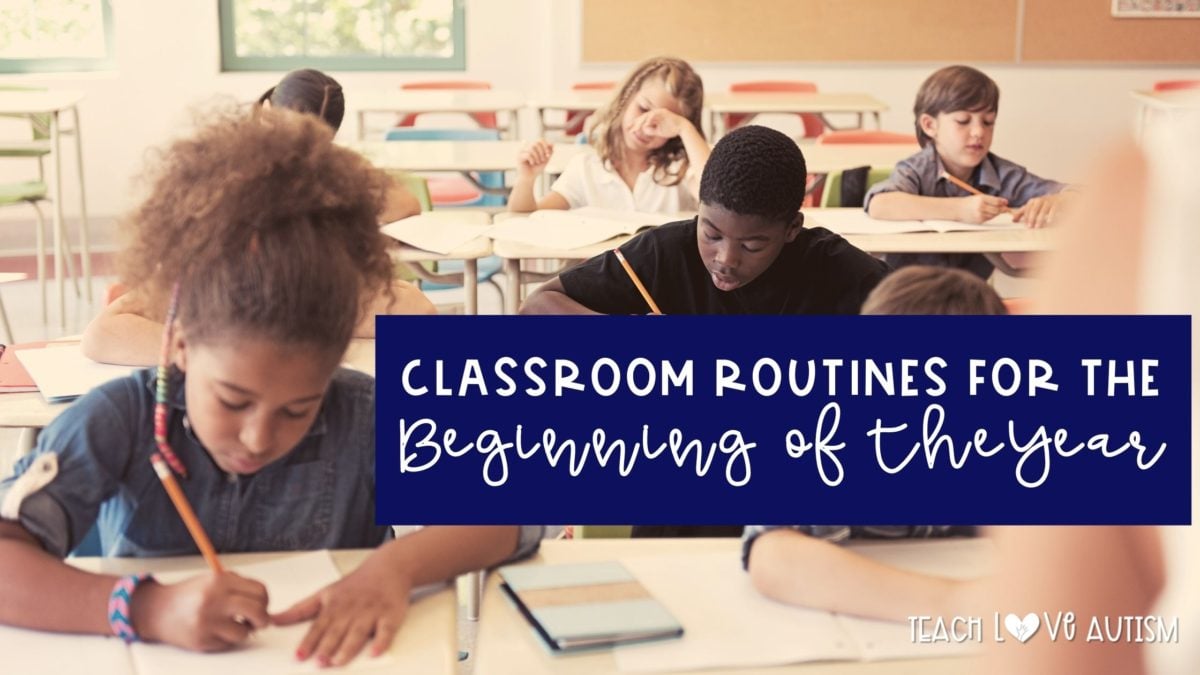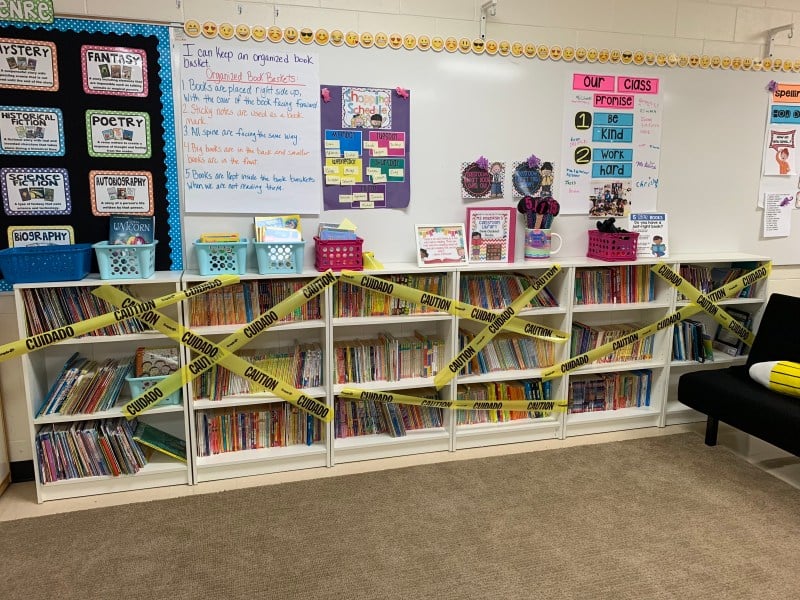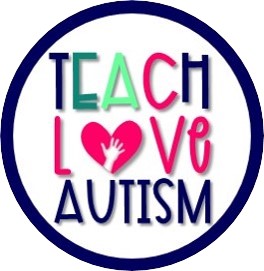Classroom Routines for the Beginning of the Year
Sharing is caring!

Do you have “back to school” dreams, as I do? Every summer, I end up having dreams about going back to school and the classroom routines. Sometimes those dreams are positive, sometimes they don’t even make sense, and sometimes they are downright anxiety-inducing. When I have a “back to school” dream, I always wake up thinking about what the first days will look like. Let’s be real, the first days of school are not really about the curriculum. There are so many other things to teach first. What classroom routines should I teach? How should I set up my classroom? How can I make each child feel welcomed? So what should we be teaching on the first days of school?
Using Attention Grabbers
One of the very first things that I teach my students is my attention grabbers. Some classics are clapping, flicking the lights, or saying a quick catchy phrase. There are so many ideas out there, but to save you the time of searching Google, here are 25 Attention Getters to Calm a Noisy Classroom.
Bathroom Classroom Routines

Here are some things to think about. How many students are allowed in the washroom at a time? How will students let you know they need to use the washroom? Do students have to put something on their desks to remind you that they’re in the washroom? And don’t forget, we also need to teach our students washroom behavior, such as washing hands properly. On the first day of school, students might be too shy or embarrassed to ask to use the washroom. I like to do a giant washroom break with my students on the first day. Halfway through the morning, we all line up outside the washroom so anyone who needs the washroom can go.
Classroom Routines & Expected Behavior
There are many other ways to work on expected behavior and one of those is to explicitly teach the behaviors that you wish for the students to learn and exhibit in the classroom. I often will do this by picking something specific like raising their hand when needing to speak, walking in the hallway, or how to handle a change in the schedule. Many times we find ourselves teaching these at the moment but, it also is helpful to be proactive with the behaviors that you might expect to happen most often. You can work with your students to behave positively in the future by going over them now.
Classroom routines are no different. They need to be taught specifically sometimes with an exact order that the routine is to be completed. Things like packing up and unpacking for the day might have a specific procedure in your classroom. You may want to set up a way that students always transition in the classroom including a sound or doorbell signal. You may have a way that students need to get ready for a fire drill or other emergency in the classroom. As teachers, we must assume that each and every one of these procedures needs to be taught no matter what grade our students are in.
Line-Up and Hall Walking
Will you have a special line order? If you do have a special line order, will it be on the wall somewhere for students to see? I have a teacher colleague who purchased a chalkboard sticker and stuck it to the wall by her door. Each year she writes her students’ names in their line order. This is such a great visual tool for students so they can quickly get into their line.
Have the students practice getting into a line multiple times during the first days of school. This is a skill they will use all year, so mastering this skill early is essential. And after students can line up well, make sure to practice how to walk in the halls.
Transitions
Transitions can be tricky, especially at the beginning of the year. They can really be tricky for anyone, but students with disabilities find transitions especially tricky. So let’s set all our students up for success by practicing transitions.
During the first days of school, remember to give your students and yourself grace as you teach them how to transition between activities. However, be consistent because this will be key for helping students to understand your expectations more quickly.
One of the best ways I like to provide my students with ways to successfully transition is using visual timers and schedules. The timers can help the students to see how much time they have left in the activity and know when to expect the transition to occur. The schedule can help the students see what is coming next and know what to transition to.
If you are looking for something to help you with transitions I suggest some of these products I have in my store:



Classroom Routines for Library Behavior

It’s important to teach your students about library etiquette. How do you want your students to take books out of the library? Where should they put books back? What should they do if a book gets damaged? Where can they read the books? When can they read the books? The rules in each classroom will be a little different, but make sure your students know what your expectations are because they might be different from their last teacher’s expectations.
If you want a fun way to teach these expectations, here’s an idea from a colleague. Purchase a cheap roll of Caution tape from Amazon and use it to section off your library. When the students arrive on the first day of school, the library will look like a crime scene! On day two or three, let the students know that the Caution tape can come off, but first, they have to learn the rules. This helps to create some excitement around learning rules.
Work Expectations
Where will students hand in their completed assignments? Where will they keep assignments they are still working on? What should students do if they finish early? Are students allowed to talk while they work at their desks? How will you monitor the noise levels?
These are all important things to teach during the first days of school. I find that starting more strictly with work expectations works well. It’s easy to relax some expectations, but it’s trickier to tighten expectations. I like to air on the side of strict during the first months of school. Then, as students show me their independence and capabilities, I’ll relax the expectations.
If teaching the expectations and rules is something you really want to focus on a lot during the first few weeks of school I highly suggest reading this blog post to get more information on how I do it in the classroom with structure and consistency throughout the entire school day.
Grace, Respect, Love, and Kindness
I think one of the most essential things to teach on the first days of school is virtues. These are hard to teach explicitly, however, we can model these qualities to our students. We can read stories, such as Have You Filled a Bucket Today or Do Unto Otters, to help teach these qualities. We can praise students when we see them showing admirable qualities. I deeply desire to build a safe classroom for my students. A place where they can feel grace, respect, love, and kindness. And a place where they can show grace, respect, love, and kindness.
There are so many important things to teach on the first days of school. We teach some curriculum, learn students’ names, and classroom routines. But most importantly, we set the tone for our classroom. What are some things that you teach on the first days of school?




One Response
I am really impressed with your knowledge. Thank you for sharing this!